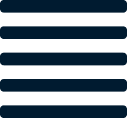While the two go together like peanut butter and jelly, there are key differences between the role of a Buyer and that of a Planner. For instance:
- The Planner determines the right order quantity and order time whereas the Buyer determines the right selling quantity and selling time.
- In some cases, the Buyer is also responsible for making sure the business has the right product, in the right place, at the right price.
In any case, it’s important to note that Buyers and Planners must work together, challenge each other, and ultimately align on what’s best for the business.
So what exactly are the main differences?
1. Working with Marketing
The main difference between a Buyer and Planner as they work with Marketing is that a Buyer provides information to Marketing whereas a Planner receives information. Since a Buyer’s responsibility is determining the selling quantity, their objective is to sell products as effectively as possible. This means providing the Marketing team with product strategy to optimize selling. Explaining who the products were purchased for and why can help inform the marketing strategy.
A Planner, on the other hand, is a recipient of this strategy. Their objective is to understand the outputs that will impact future demand so that the right order quantity can be determined for a later point in time.
2. Working with Supply Chain
Similar to the relationship mentioned above, Buyers are often providing information in the earlier part of the supply chain whereas Planners are often receiving information in the latter. A Buyer may work with the team on the development or procurement of goods, whereas the Planner is more involved from the stages of PO placement to receipt.
Put simply, a Buyer is responsible for product records such as vendors and costs, whereas a Planner is responsible for inventory records such as receipts and timing of ownership.
3. Analyzing the Business
While both will dive deeply into understanding the business, a Buyer will most often speak to top sellers and the result of marketing efforts on product sales, whereas a Planner will go further into category insights, comparison to forecasts, and monitoring inventory.
This process is one where the two roles must work the closest together to best understand the business.
4. Using Data
While the data both Buyers and Planners read to understand performance may be similar, a key difference is that Buyers are more focused on data related to the future and upcoming trends whereas Planners are more focused on past demand and historical sales.
5. Organizational Structure
Because their worlds overlap so much, you’ll often see a Buyer and Planner by each other’s side. However, they may technically sit under separate teams. A Buyer will often sit under a function that oversees revenue, such as Sales or Marketing. On the other hand, a Planner may sit on a team that oversees inventory and budgets, such as Finance. This separation helps ensure there are healthy challenges across interests, thus supporting what’s best for the overall business.
Two Peas in a Pod
The synergy of Buyer and Planner is integral to the success of any organization. While the Buyer focuses on who, what, why and where in order to build a top down approach, the Planner focuses on how much and when to build a bottoms up logic to eventually align at the optimal level.
Fuse helps align these two forecasting methodologies systematically so that less time is spent on the nitty gritty, and more time can be spent on building the best relationship and strategies for the business.
.png)

.png)









.png)



%20hover.png)
.png)
hover.png)







Let us know what you think about this post
Put your comment below.